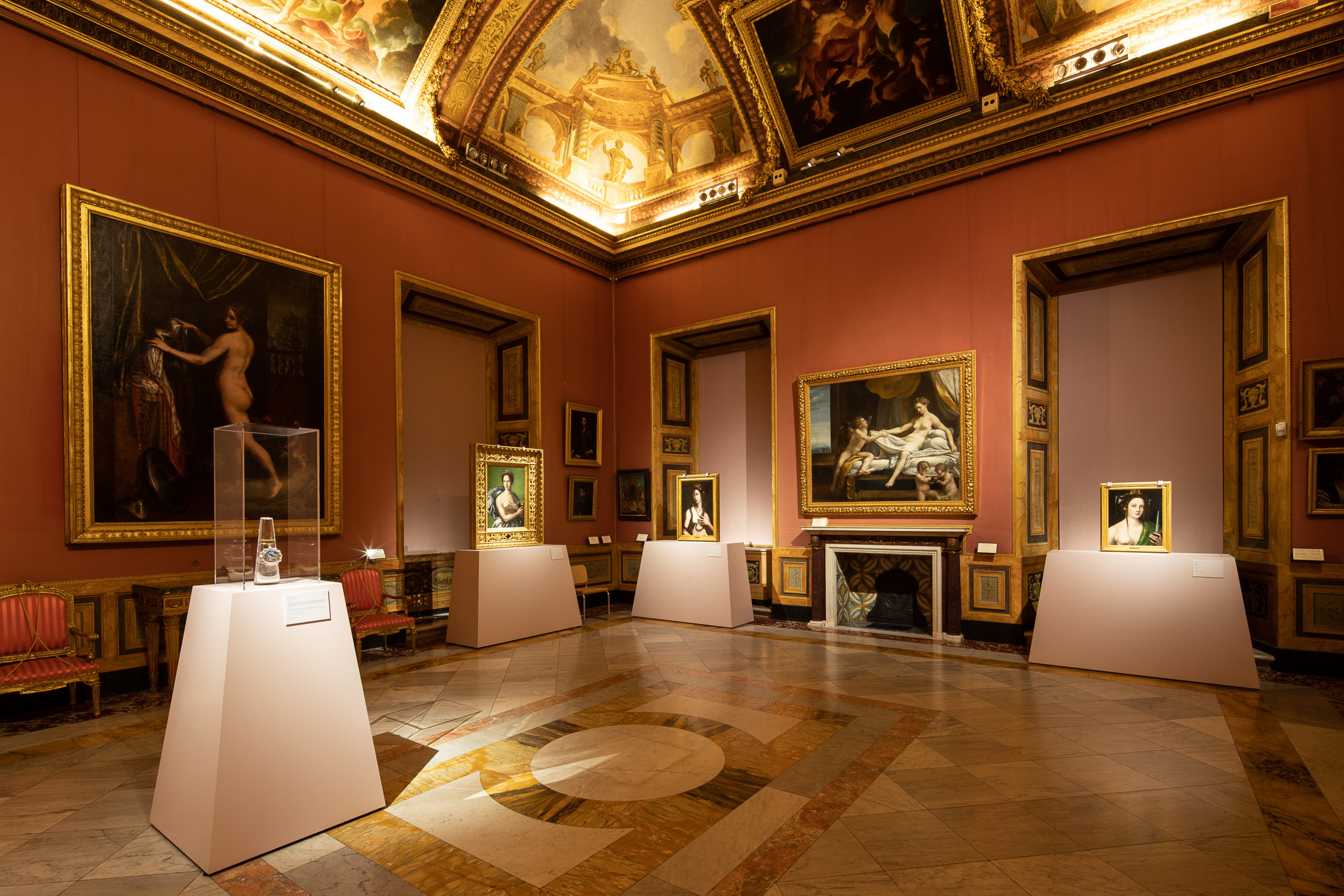Immortalizing beauty

Iconic religious images and portraits were the most common subject represented on stone during the Sixteenth century. Leonardo Grazia da Pistoia instead used stone to portray monumental and seductive female figures from mythology and Roman history. Some, like the Hebe in Palazzo Barberini, or the Venus of the Galleria Borghese are on panel, but the frequent choice of stone, demonstrates the painter’s wish to immortalize feminine beauty. Inventories of paintings in Rome and Naples show that his alluring figures were often replicated and possibly displayed in series.
The Martyrdom of St Catherine on lapis lazuli, from an original by Guido Reni, probably was one the many necklace charms much in fashion among Spanish gentlewomen. Many were commissioned by the Barberini and used as diplomatic gift: made in Rome, with ancient marbles, they spread abroad the image of the city. It was thought that semi-precious stones cured many ailments, especially when worn, and in particular lapis lazuli was believed to cure fever.